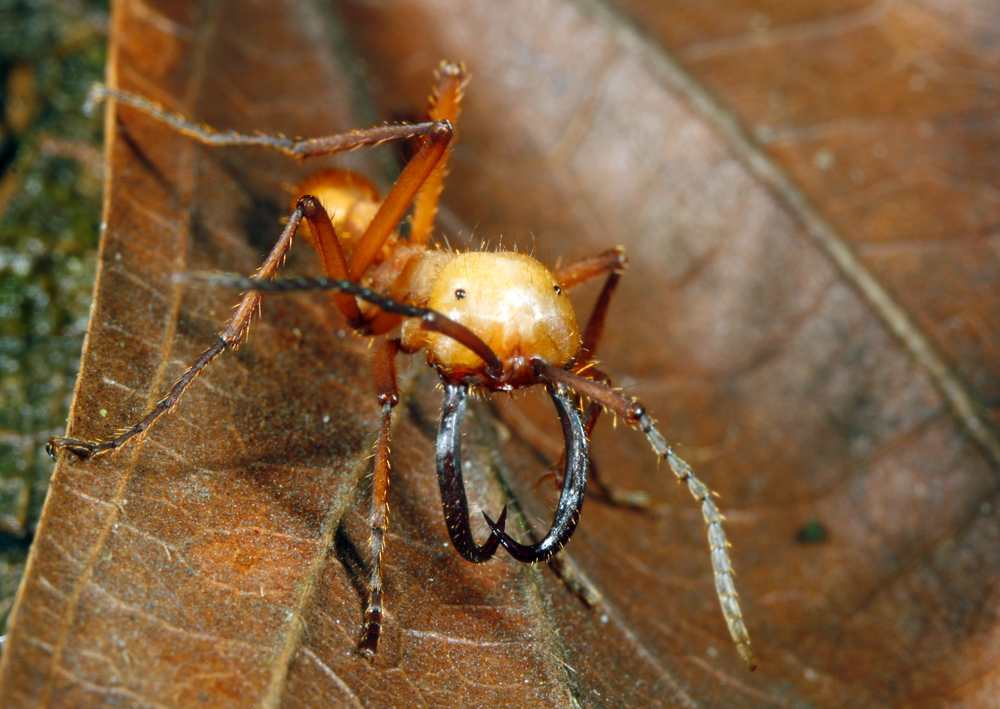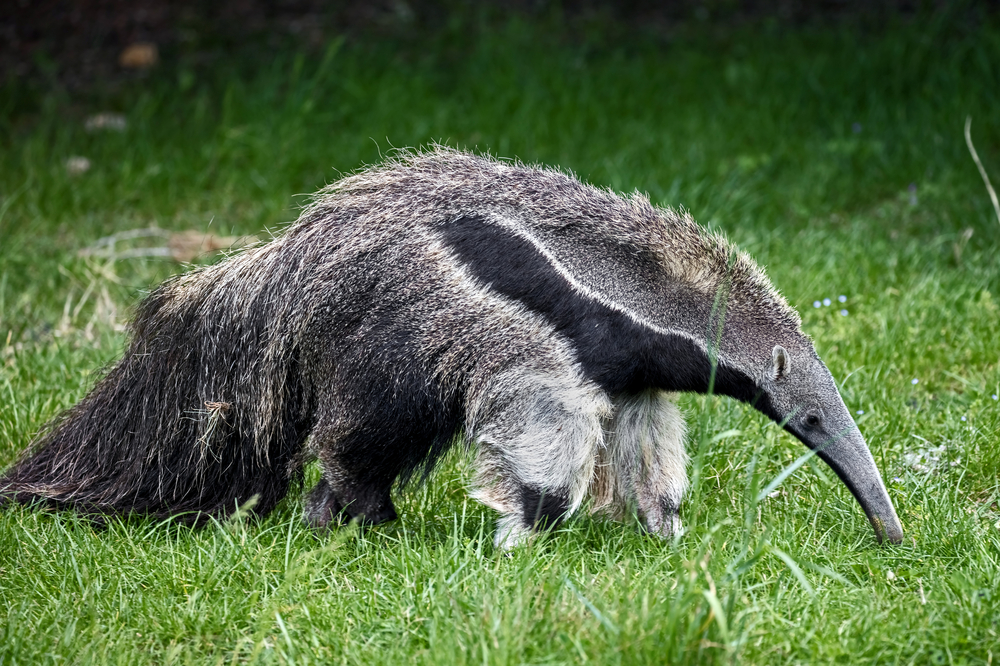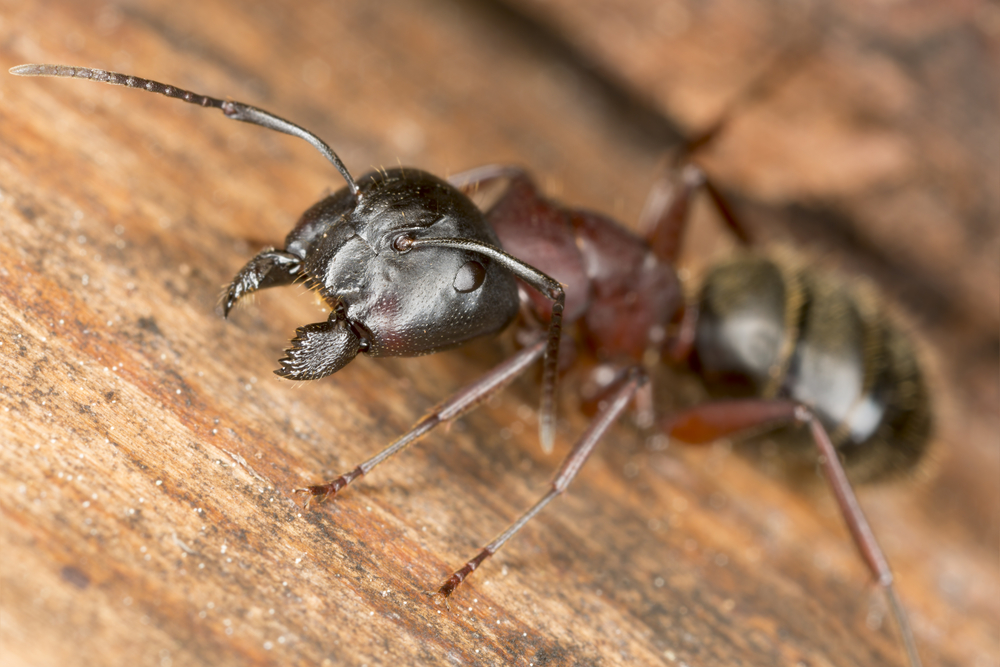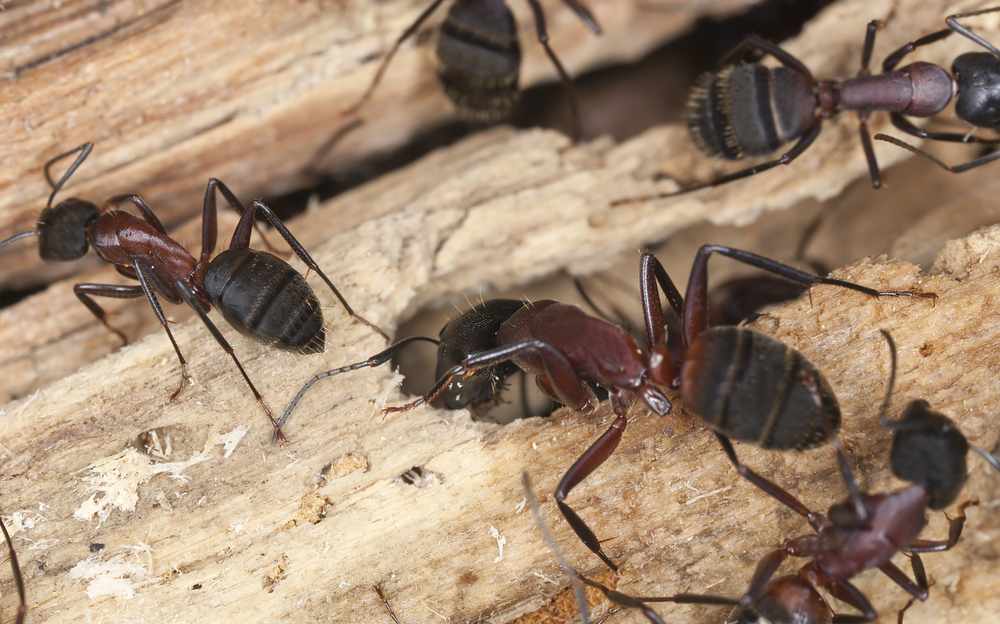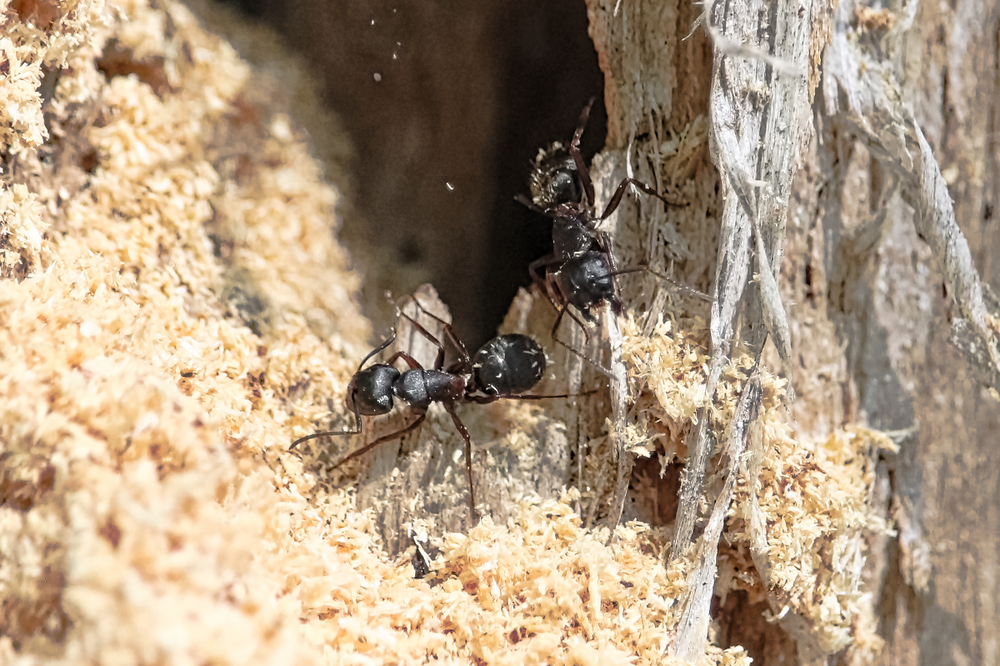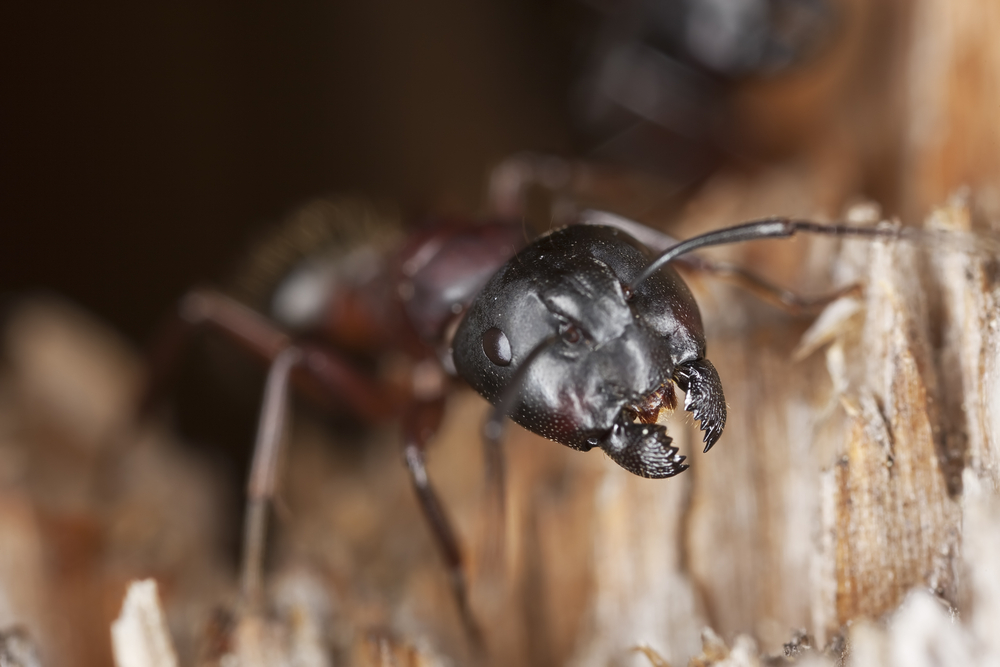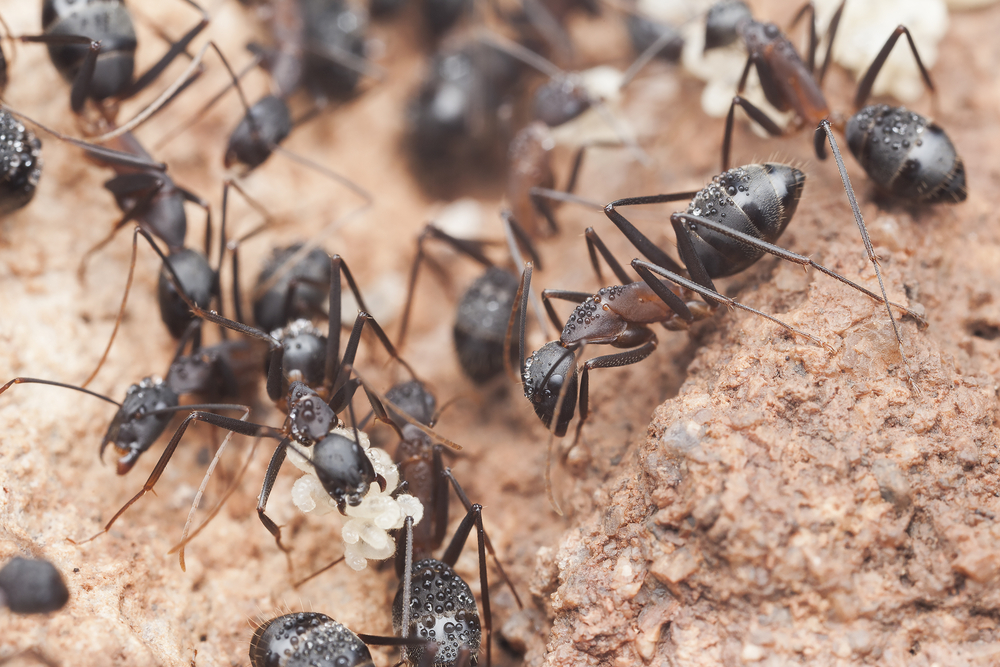Carpenter ants and termites are both insects that can damage wood, but they have significant differences:
- Diet:
- Carpenter ants primarily feed on insects, sugary substances, and other organic matter. They do not eat wood.
- Termites are known for their ability to digest cellulose, the main component of wood. They feed on wood, causing structural damage.
- Wood Damage:
- Carpenter ants do not eat wood but excavate galleries and tunnels in wood to create nests. They can weaken wooden structures but do not consume the wood itself.
- Termites consume wood as a food source, which can result in extensive damage to wooden structures and buildings.
- Physical Characteristics:
- Carpenter ants are typically larger than termites. They have a distinct segmented body with a narrow waist and bent antennae. They are often black or reddish-brown.
- Termites have a more uniform, cream-colored or pale body, and their antennae are straight. They have a soft body and are often mistaken for white ants.
- Colony Structure:
- Carpenter ant colonies consist of workers, soldiers, and a queen. They have a hierarchical social structure.
- Termite colonies include workers, soldiers, a queen, and a king. They also have a caste system but are more organized than carpenter ant colonies.
- Nesting Habit:
- Carpenter ants typically nest in pre-existing cavities in wood, such as dead trees, logs, or wooden structures.
- Termites construct their nests (mud tubes or mounds) from soil, saliva, and feces in or near the wood they feed on.
- Ecological Role:
- Carpenter ants play a role in forest ecosystems by aiding in the decomposition of dead wood and preying on insects.
- Termites also contribute to wood decomposition but are more efficient at breaking down cellulose in wood.
In summary, while both carpenter ants and termites can impact wood, they differ in their diet, the type of wood damage they cause, physical characteristics, colony structure, nesting habits, and ecological roles. Termites are more known for causing extensive structural damage to wooden buildings, while carpenter ants are primarily wood-nesting insects that can weaken wooden structures but do not consume wood as a food source.


































































